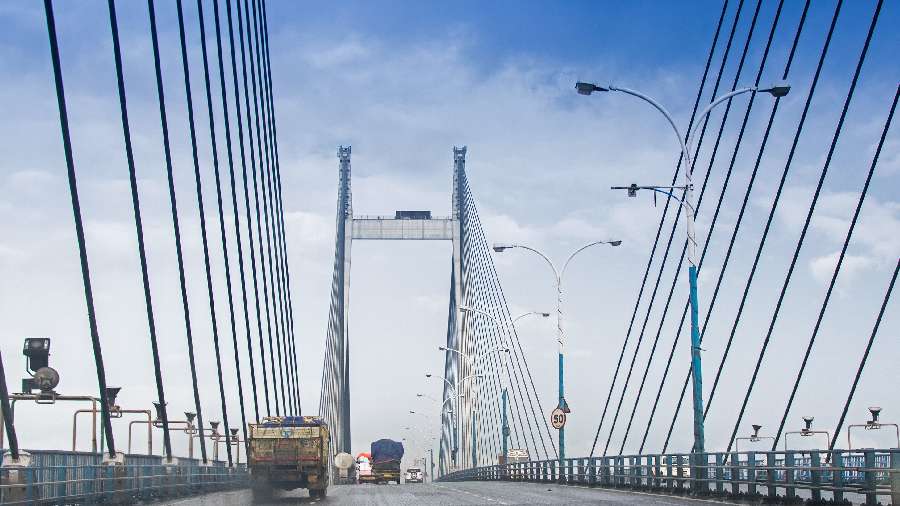Vidyasagar Setu will remain shut to traffic from 11.50pm on April 29 to 6am the next day and again from 11pm on April 30 to 5am the next day to facilitate a “taut string test” of the bridge’s cables in “no-traffic condition,” police said.
The bridge, which has been in use since 1992, handles close to 90,000 vehicles every day.
Officials said the vehicle count on the bridge has been increasing steadily since the state secretariat was shifted to Nabanna from the Writers’ Buildings in 2013, after Mamata Banerjee took over as chief minister.
“We have selected the nights of Saturday and Sunday for the closure because traffic then remains thin. After 5am on Monday, which is May Day, the bridge will be open for regular traffic movements,” said a senior officer of Kolkata police.
During the time when the bridge will remain shut, vehicles headed for the bridge from the Alipore zoo and from Red Road will be diverted towards the Hastings crossing, from where they will move through Strand Road on their way to the Howrah bridge, the police said.
Goods vehicles headed for the bridge will be diverted towards Dufferin Road, Mayo Road and Central Avenue. They will eventually head towards Nivedita Setu, across the Hooghly, in Dakshineswar via BT Road and Dunlop.
“All traffic guards have been told about the diversion plan. We are also planning to put up banners and hoardings with details of the diversion,” said a senior police officer at Lalbazar.
A team of engineers from the Hooghly River Bridge Commissioners (HRBC), the custodian of Vidyasagar Setu, will scan the 152 cables of the structure during the periods it will remain closed to traffic, senior police officers said.
“Engineers will study the level of stress the cables may have suffered because of the traffic, wind velocity and movement of the decks over a period of time,” said a senior HRBC official.
“Structural experts froma French engineering company will join the team of engineers who will study the bridge.”
Each of the cables of the bridge — India’s longest cable-stayed bridge, spanning 823 metres — has three layers.
The innermost layer is made of a bunch of non-galvanised cables and the outer layer is made of rubber. The intermediate layer, which is made of wax, prevents water seepage.
The team of engineers has identified 14 cables that need to be replaced. The team will calibrate how the cables oscillate.
HRBC officials said the test results will be analysed in the presence of structural experts, who will then draw up a repair and restoration plan for the cables as well as other parts of the bridge.
“A thorough repair and overhauling of components will increase the load-bearing capacity of the structure and ensure that the cables are not worn out because of arbitrary oscillations,” the official said.
